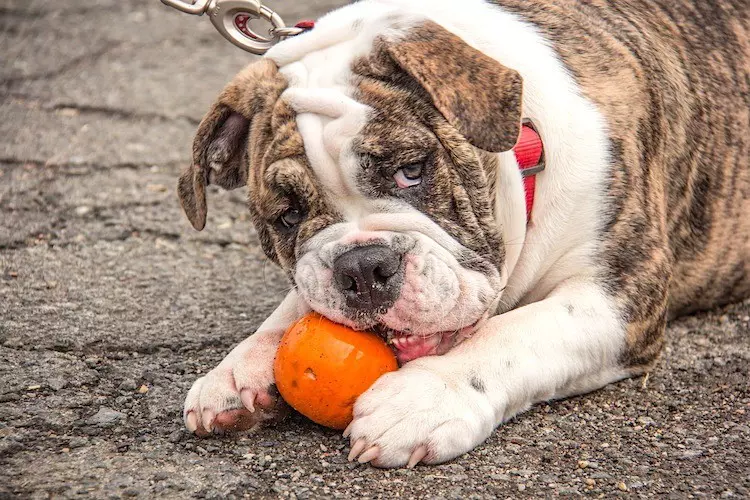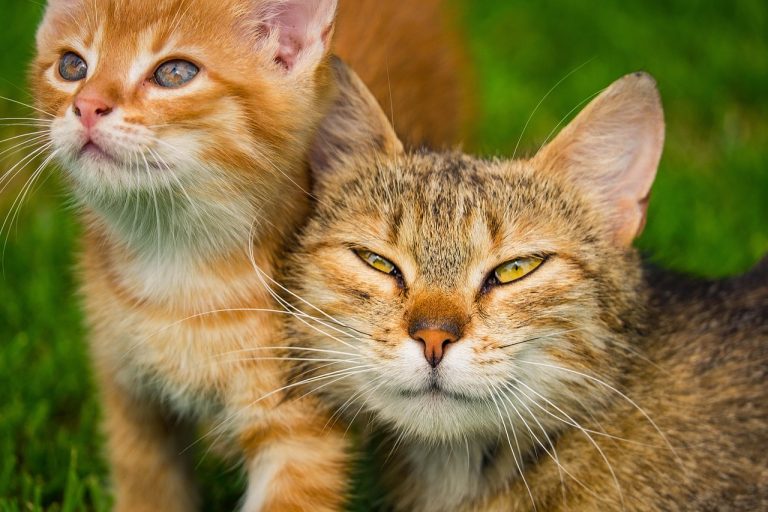The Pros and Cons of Feeding Pumpkin to Pets
It can help alleviate both constipation and diarrhea, but pumpkin’s not a long-term cure.

Is pumpkin the new fad, like gluten-free, grain-free and no-go-GMO? Seems every time I turn around, a client is bringing their dog in for diarrhea, saying, “We tried pumpkin, but it didn’t really work.” Or, “Someone told me to add pumpkin to every meal, so I’m doing that.”
Pumpkin might be on your mind right now because it’s everywhere: Mounds of pumpkins on display awaiting the knife, pumpkin lattes, pumpkin muffins, pumpkin ice cream, pumpkin bread, pumpkin pancakes — even pumpkin beer!
Since you can’t escape the notion of pumpkin right now, I thought I’d let you know how and when to properly try a bit of pumpkin for your pets, what kind to use and what to use it for. Dogs can eat pumpkin in moderation, and it can even offer some digestive benefits when used correctly.

Don’t leave your pet’s safety to chance
Sign up for Petful recall alerts today.

Pumpkin for Constipation and Diarrhea
Most people try adding pumpkin when they think their dog or cat is either constipated or having diarrhea. How can the same substance help both diarrhea and constipation? It’s all about the balance of fiber found in pumpkin and how it helps digestive and GI health.
Many dog and cat lovers think a spoonful of pumpkin is a GI cure-all, but give too much or continue to feed pumpkin when it isn’t helping the problem, and you can make the problem worse and delay recovery. If you try pumpkin for a GI malady and it isn’t resolving the problem in 24 hours, seek the help of your veterinarian.
The fiber in pumpkin is purported to help regulate bowel movements, but fiber is complicated and not a 1-size-fits-all kind of remedy.
Pumpkin and the Fiber Puzzle
Pumpkin, like many other foods, fruits and vegetables, contains fiber. There is soluble fiber and insoluble fiber, pumpkin having a small amount of both.
Soluble fiber can act like a sponge when there’s excess water in the GI tract (diarrhea). Insoluble fiber does sort of the opposite, drawing water into the GI tract when the stool is dry and hard (constipation) to make a bulkier, softer stool that can pass. An oversimplification is this: Soluble fiber slows down the GI tract (less diarrhea), while insoluble fiber quickens the movement of poop through the bowel, hopefully preventing or relieving constipation.
The top insoluble fiber foods are wheat bran and bran cereals, beans, some grains and vegetables. Pumpkin is not high on this list. Soluble fiber is found in foods like oatmeal, apples and carrots. Again, pumpkin does not top the list.
Pumpkin is over 90% water, about 3% fiber and a source of potassium, antioxidants and other vitamins.

Get a Diagnosis
Now here’s the crux of the problem: A pet with continuing diarrhea or constipation needs a diagnosis, not endless spoonfuls of pumpkin or other supplements. Once we diagnose the GI problem, we can recommend the right diet and other medications as necessary.
If your pet has loose stool or you think they are constipated, try adding pumpkin to the diet for 24–36 hours, as long as your pet remains very perky. If the abnormal bowel movements are not getting better or if your pet is acting ill, get to the vet.
Pumpkin Feeding Guidelines
Some people feed pumpkin as an additive to keep their pet “regular,” and many cats and dogs seem to like it. This is fine, as long as the stools remain normal. Here are the basic guidelines:
- Feed canned pumpkin, not pumpkin pie filling.
- You can use cooked, fresh pumpkin, but it is not necessary. Canned pumpkin is fine.
- Making pumpkin “ice cubes” is a nice way to keep it fresh.
- Dosing is empirical. There is no set dose; dosing depends on the severity of the problem.
- Cats, for constipation: 1 tablespoon per can of food.
- Cats, particularly geriatric cats, can suffer from severe constipation. These kitties usually need more than pumpkin to keep them regular, but many cats like pumpkin. It can also help as an additive on a daily basis.
- Cats, for diarrhea or inflammatory bowel: 1 teaspoon per can of food.
- Dogs, 1 tablespoon/meal for large dog; 1–2 teaspoons for small to medium dogs.
Again, moderate to severe GI cases require a combination of diet, supplements and medications.
Pumpkin is more commonly used for dogs for mild diarrhea. Constipation is not a common problem in dogs. If pumpkin is to be used to create a softer, looser stool, such as in the case of a fractured pelvis or after certain surgeries, more pumpkin is usually needed, up to 4 tablespoons per large dog per meal.
My take? Pumpkin is a safe and palatable aid for digestive and GI health, but it’s too benign to be a true cure for sick animals. Many GI diseases require specific fiber requirements, and pumpkin is not a great source of fiber for these cases. I’m sorry to say that too many people keep trying pumpkin when it is doing nothing more than turning their pooch’s poop orange.
When in doubt, call your vet. Explain how long your pet has been experiencing abnormal bowel movements, and get some solid advice.
This pet health content was written by a veterinarian, Dr. Debora Lichtenberg, VMD. It was last reviewed Aug. 11, 2023.







